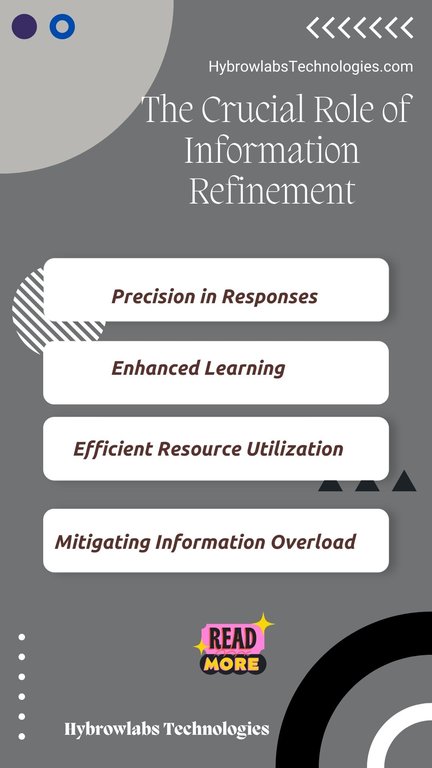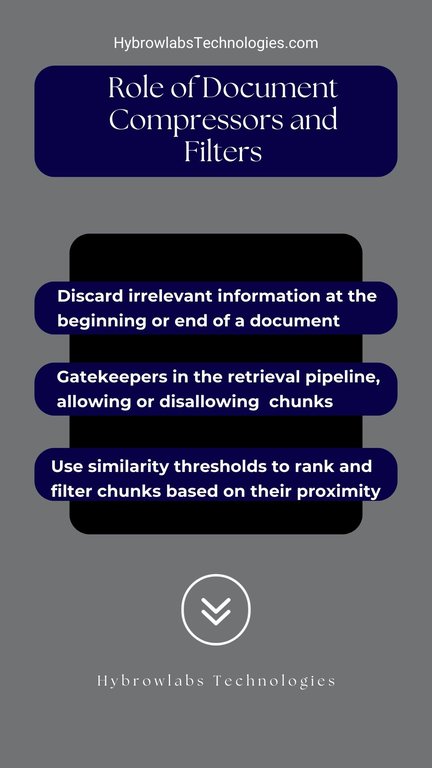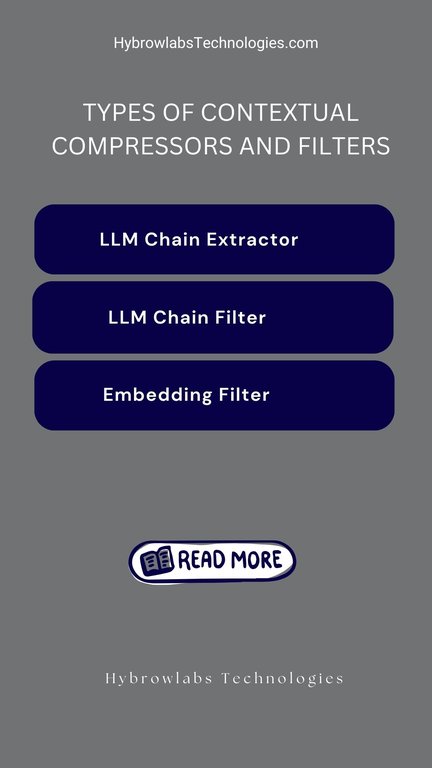In the evolving landscape of natural language processing, Retrieval-Augmented Generation (RAG) has emerged as a pivotal framework. RAG, while powerful, is not without its challenges. The fundamental issue lies in the precision of information retrieved—how effectively does the retrieved content contribute to the language model's ability to generate accurate and relevant responses? You can also read our blog on Advanced RAG 01: Self-Querying Retrieval and get to know more about RAG Technology.
Brief overview of the challenges in RAG issues
RAG confronts the intricate task of sifting through vast amounts of information to distill the most pertinent details. The challenge becomes pronounced when the retrieved data comprises a mix of valuable and extraneous elements. A critical aspect is discerning the optimal balance between information richness and conciseness.
Importance of refining the information retrieved for optimal language model performance

- Precision in Responses: The quality of responses generated by a language model heavily relies on the relevance and accuracy of the information provided during the retrieval phase.
- Enhanced Learning: The language model's learning process is significantly influenced by the quality of data it receives. Refining the information ensures that the model is exposed to high-quality inputs, fostering improved comprehension and response generation.
- Efficient Resource Utilization: In scenarios where computational resources are finite, refining retrieved information becomes imperative. Unnecessary data can strain processing capabilities, impacting the model's efficiency.
- Mitigating Information Overload: RAG often deals with copious amounts of text. Effective refinement mitigates the risk of overwhelming the language model with irrelevant details, streamlining the learning process.
- Adaptability to Specific Tasks: Different tasks may require distinct types of information. Refining the retrieved content allows customization based on the specific requirements of the task at hand, contributing to the model's adaptability.
Contextual Compression and Filters: Enhancing Retrieval
In the dynamic landscape of Retrieval-Augmented Generation (RAG), the efficiency of the retriever plays a pivotal role in determining the language model's overall performance. An inherent challenge arises in discerning the relevancy of the information retrieved. Often, the retriever brings back diverse chunks of data, only a fraction of which is pertinent to the user's query. Contextual compression and filters emerge as powerful tools to address this challenge and streamline the information flow.
A. Explanation of the Concept of Contextual Compression
Contextual compression involves the utilization of document compressors and filters to refine and condense the information obtained from the retriever. Instead of inundating the language model with voluminous chunks of data, contextual compression focuses on extracting only the most relevant portions. The goal is to enhance the precision of the retrieved information, providing the language model with a more concise and targeted dataset for generating accurate responses.
B. Role of Document Compressors and Filters in Processing Retrieved Information

Document Compressors:
- These are mechanisms designed to process the retrieved documents and extract valuable content.
- Compressors may discard irrelevant information at the beginning or end of a document, focusing on the core details essential for answering the user's query.
Filters:
- Filters serve as gatekeepers in the retrieval pipeline, allowing or disallowing certain chunks based on their relevance.
- Large Language Model (LLM) chain filters, for example, employ a yes/no approach, determining whether the context is pertinent to the user's question.
- Embedding filters, on the other hand, use similarity thresholds to rank and filter chunks based on their proximity to the original query.
Addressing the Challenge:
- The primary challenge lies in the need to sift through extensive information to pinpoint the relevant details.
- Contextual compressors and filters act as a sophisticated sieve, separating the wheat from the chaff and ensuring that the language model is fed with information crucial for generating accurate responses.
C. Addressing the Challenge of Extracting Relevant Data from Large Chunks
The challenge of extracting relevant data becomes particularly pronounced when dealing with large chunks of information. Contextual compression comes to the rescue by intelligently trimming and refining the data, leaving behind only the essentials. This process is essential for synthesizing information from multiple chunks, particularly in scenarios where a question demands insights scattered across various documents.
The implementation of contextual compression introduces a strategic approach to information retrieval. By leveraging document compressors and filters, RAG systems can overcome the inherent noise in large datasets, presenting the language model with a distilled and highly relevant set of information. This not only enhances the accuracy of generated responses but also contributes to the overall efficiency of the RAG system.
Types of Contextual Compressors and Filters

In the realm of Retrieval-Augmented Generation (RAG), the efficiency of information retrieval plays a pivotal role in the overall performance of language models. Contextual compressors and filters emerge as crucial tools to address the challenges associated with refining the retrieved content. Let's delve into the different types of contextual compressors and filters, exploring their functionalities and practical applications.
A. LLM Chain Extractor
The LLM (Large Language Model) Chain Extractor represents a significant advancement in contextual compression. It involves the use of a large language model to extract relevant information from a given context. The process begins with a comprehensive overview of how a language model can be harnessed for context extraction:
Overview of Large Language Model Usage:
- Large language models, with their vast knowledge base, can be employed to extract pertinent information from a given context.
- The model acts as a sophisticated extractor, identifying and isolating relevant details from a pool of information.
Fine-Tuning for Specific Tasks:
- Examples abound of fine-tuning models for specialized tasks, such as extracting information from emails.
- Fine-tuning allows the model to disregard extraneous details and focus solely on the task at hand, enhancing efficiency.
B. LLM Chain Filter
The LLM Chain Filter introduces a yes/no filtering approach to determine the relevance of retrieved content. This filtering mechanism is instrumental in streamlining the information retrieved from various sources. Let's explore the key aspects of this filter:
Yes/No Filtering Approach:
- The LLM Chain Filter adopts a binary approach, categorizing content as either relevant or irrelevant to the specified question or context.
- This approach simplifies the subsequent processing by eliminating non-essential information.
Illustrations of Streamlined Content:
- Practical illustrations showcase how the filter streamlines the retrieved content.
- By discarding irrelevant details, the filter ensures that the retained information aligns closely with the user's query.
C. Embedding Filter
The Embedding Filter introduces a nuanced approach to context retrieval and filtering by leveraging embeddings. This technique involves using embeddings to refine information, providing a more targeted and precise output. Here are the key components of the Embedding Filter:
Utilizing Embeddings for Context Retrieval:
- Embeddings play a pivotal role in retrieving context, capturing semantic relationships and similarities between different pieces of information.
- The process involves embedding the original query to retrieve relevant context efficiently.
Effectiveness of Embedding Filters:
- The effectiveness of embedding filters lies in their ability to refine information based on semantic similarities.
- By assessing the similarity between the query and retrieved context, embedding filters contribute to the delivery of more contextually relevant information.
Document Compressor Pipeline: Integration of Filters
A. Explanation of the Document Compressor Pipeline Concept
In the realm of Retrieval-Augmented Generation (RAG), the Document Compressor Pipeline stands as a critical component, ensuring that the information retrieved is not only relevant but also finely tuned for the language model's comprehension. This section delves into the concept of the Document Compressor Pipeline, highlighting its pivotal role in enhancing the efficiency of RAG systems.
B. Step-by-Step Breakdown of the Pipeline's Components
1. Retrieval of Context Using a Base Retriever
The pipeline initiation involves the foundational step of retrieving context. A base retriever is employed to gather a diverse set of information relevant to the user query. This step sets the stage for subsequent processing in the Document Compressor Pipeline.
2. Application of Contextual Compressors and Filters
Once the context is retrieved, contextual compressors and filters come into play. These components work in tandem to process and refine the information, extracting only the most pertinent details needed to address the user query. The section explores various types of compressors and filters, such as LLM Chain Extractors and Filters.
3. Embedding Filters for Final Refinement
To fine-tune the filtered information further, embedding filters are introduced. These filters leverage embeddings to assess the relevance of the information in relation to the user query. The goal is to ensure that the final output is not only accurate but also closely aligned with the context of the query.
C. Balancing Speed and Complexity in Real-Time Applications
An integral consideration in implementing the Document Compressor Pipeline is finding the delicate balance between speed and complexity, especially in real-time applications. The section discusses strategies for optimizing the pipeline's performance, taking into account the need for quick responses and the depth of information processing required.
Code Implementation: Hands-On Exploration
A. Set Up of Standard LangChain Components
Before delving into the hands-on exploration of the code, a comprehensive setup of standard LangChain components is crucial. This includes configuring tools such as FAISS and text splitters, laying the foundation for seamless code execution.
B. Importance of Tools like FAISS and Text Splitters in the Code
The implementation of the Document Compressor Pipeline relies on essential tools like FAISS for efficient similarity searches and text splitters for breaking down large chunks of information. This section emphasizes the significance of these tools in optimizing the RAG system's performance.
C. Demonstration of Contextual Compression and Filtering through Code Snippets
The hands-on exploration comes to life as we walk through code snippets illustrating the practical implementation of contextual compression and filtering. The following sub-sections provide detailed insights into the code for LLM Chain Extractors, LLM Chain Filters, and Embedding Filters.
1. LLM Chain Extractor
Let's take a deep dive into the code, uncovering the intricacies of LLM Chain Extractors. These components play a pivotal role in the document compressor pipeline by intelligently trimming irrelevant parts of retrieved context, leaving behind only the information essential to addressing the user's query.
# Code snippet for LLM Chain Extractorfrom langchain import LLMChainExtractor# Instantiate the LLM Chain Extractorllm_extractor = LLMChainExtractor()# Input the retrieved contextretrieved_context = "Announcing LangSmith, a unified platform for debugging, testing, and evaluating..."# Apply the LLM Chain Extractor to trim irrelevant partsextracted_info = llm_extractor.extract_information(retrieved_context)# Display the resultprint("Extracted Information:", extracted_info)
In this example, the LLM Chain Extractor is applied to the retrieved context, intelligently extracting and retaining the most pertinent information needed for the user query.
2. LLM Chain Filter
Moving forward, let's explore the code for LLM Chain Filters. These filters operate as a yes/no mechanism, determining the relevance of context to the user's question. The code demonstrates how LLM Chain Filters streamline the information, providing a clearer understanding of its significance.
# Code snippet for LLM Chain Filterfrom langchain import LLMChainFilter# Instantiate the LLM Chain Filterllm_filter = LLMChainFilter()# Input the retrieved contextretrieved_context = "Announcing LangSmith, a unified platform for debugging, testing, and evaluating..."# Apply the LLM Chain Filter to determine relevanceis_relevant = llm_filter.is_context_relevant(retrieved_context)# Display the resultprint("Context Relevance:", "Yes" if is_relevant else "No")
In this code snippet, the LLM Chain Filter assesses the relevance of the context, providing a binary answer (Yes/No) based on its determination.
3. Embedding Filter
Finally, let's take a detailed look at the code implementing Embedding Filters. These filters utilize embeddings to refine and rank the information retrieved by the RAG system. The code showcases how embeddings contribute to the final refinement of the context.
# Code snippet for Embedding Filterfrom langchain import EmbeddingFilter# Instantiate the Embedding Filterembedding_filter = EmbeddingFilter()# Input the retrieved contextretrieved_context = "Announcing LangSmith, a unified platform for debugging, testing, and evaluating..."# Apply the Embedding Filter for final refinementrefined_info = embedding_filter.refine_context(retrieved_context)# Display the resultprint("Refined Information:", refined_info)In this example, the Embedding Filter refines the retrieved context using embeddings, ensuring that the final information presented to the language model is optimized for relevance.
These code snippets provide a glimpse into the robust functionality of LLM Chain Extractors, LLM Chain Filters, and Embedding Filters, demonstrating their integral role in the contextual compression and filtering process within the RAG system.
Document Compressor Pipeline in Action
In the realm of advanced RAG (Retrieval-Augmented Generation) techniques, the Document Compressor Pipeline stands out as a powerful tool for refining and optimizing the information retrieved by a language model. In this section, we will delve into the practical aspects of the Document Compressor Pipeline, highlighting its efficiency, customization options, and considerations for different application scenarios.
A. Showcasing the Pipeline's Efficiency in Handling Multiple Tasks
The Document Compressor Pipeline is a versatile framework designed to handle a myriad of tasks efficiently. One of its primary strengths lies in its ability to process and refine large amounts of retrieved information. Let's consider a scenario where the base retriever fetches multiple contexts, each containing a wealth of data. Without proper processing, this information might be overwhelming and, in some cases, irrelevant to the specific query.
The pipeline steps in to streamline this information by employing various compressors and filters. For instance, the LLM (Large Language Model) Chain Extractor can trim down verbose content, extracting only the essential details relevant to the query. This not only enhances the model's comprehension but also significantly reduces the volume of data being passed through the pipeline.
Additionally, the LLM Chain Filter operates as a decisive gatekeeper, categorizing contexts as either relevant or irrelevant based on the query. This binary filtering approach further refines the information, ensuring that only pertinent data progresses through the pipeline. The result is a concise set of contexts that significantly boosts the efficiency of subsequent model calls.
B. Customization Options within the Pipeline for Various Use Cases
One of the Document Compressor Pipeline's key features is its adaptability to diverse use cases through customization options. Depending on the specific requirements of a task, practitioners can fine-tune the pipeline to cater to their needs. Customization begins with the choice of compressors and filters integrated into the pipeline.
For instance, in scenarios where real-time processing is crucial, practitioners might opt for a streamlined pipeline with minimal processing steps. On the other hand, for tasks like summarization or in-depth analysis, a more complex pipeline involving multiple compressors and filters could be employed. The LLM Chain Extractor, LLM Chain Filter, and Embedding Filter can be arranged in various sequences within the pipeline, offering a spectrum of customization possibilities.
Moreover, the Document Compressor Pipeline allows for the incorporation of domain-specific compressors and filters. Fine-tuning these components to the nuances of a particular field enhances the pipeline's efficacy in specialized applications. Whether it's medical information, legal documents, or technical literature, the pipeline can be tailored to extract and filter context with precision.
C. Considerations for Real-Time Applications versus Non-Real-Time Scenarios
The efficiency of the Document Compressor Pipeline is contingent on the considerations made for real-time and non-real-time scenarios. In real-time applications where immediate responses are crucial, practitioners may need to strike a balance between the complexity of the pipeline and its processing speed. Streamlining the pipeline by choosing a subset of compressors and filters becomes imperative in such cases.
Conversely, for non-real-time scenarios, where the emphasis is on thorough analysis and detailed comprehension, a more intricate pipeline can be deployed. Multiple compressors and filters can work in tandem to scrutinize and refine information comprehensively. This allows for a nuanced understanding of the context before generating a response.
It is essential to evaluate the trade-offs between processing speed and depth of analysis based on the specific requirements of the task at hand. Real-time applications demand swift responses, while non-real-time scenarios prioritize the extraction of nuanced information.
Conclusion
In the ever-evolving landscape of advanced RAG techniques, the integration of contextual compressors and filters within the Document Compressor Pipeline marks a significant leap forward. This article has explored the intricacies of this innovative approach, shedding light on its efficiency in handling diverse tasks, customization options for various use cases, and the critical considerations for real-time versus non-real-time applications.
In conclusion, the integration of contextual compressors and filters within the Document Compressor Pipeline emerges not just as a technical innovation but as a practical solution to the challenges posed by information retrieval in the field of natural language processing. As we continue to push the boundaries of what is possible in language models, this pipeline exemplifies the ongoing quest for precision and efficiency in the world of RAG. For more information on RAG, visit hybrowlabs official website today.
FAQ
Q1: How does the Document Compressor Pipeline enhance information retrieval?
The pipeline streamlines retrieved information through compressors and filters, ensuring that only relevant content reaches the language model, optimizing its response generation.
Q2: Can the pipeline be customized for specific tasks?
Yes, practitioners can customize the pipeline by choosing compressors and filters based on the task's requirements, allowing for adaptability across various domains.
Q3: What role does the LLM Chain Extractor play in the pipeline?
The LLM Chain Extractor trims irrelevant content, extracting only essential details from contexts, improving the model's understanding and reducing data volume.
Q4: How does the pipeline balance speed and complexity for real-time applications?
In real-time scenarios, practitioners streamline the pipeline, opting for minimal processing steps to ensure swift responses without compromising relevance.
Q5: Why is prompt customization important in RAG applications?
Customizing prompts for specific use cases ensures that the language model focuses on domain-specific information, optimizing relevance and response accuracy.



.jpg)


4df9a2.png)

fd8f11.png)

.jpg)
.jpg)
a3dc85.jpg)